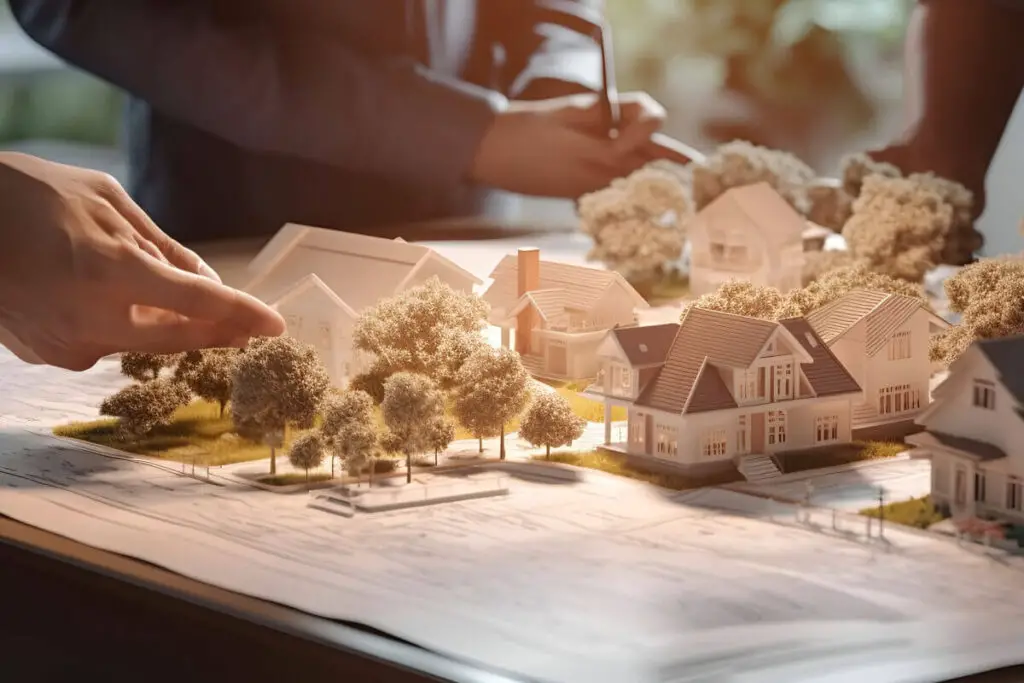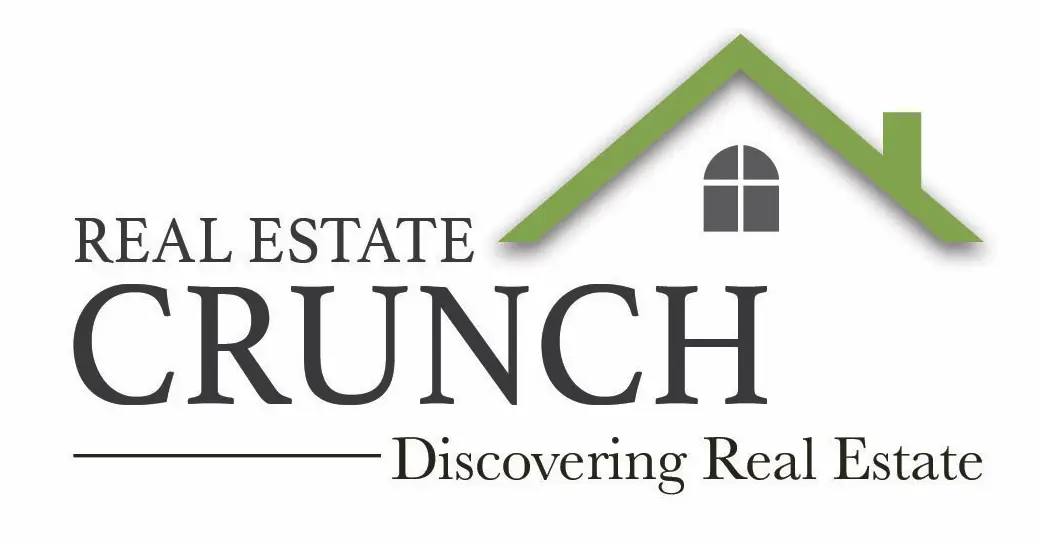In exploring property ownership’s legal and practical realms, understanding appurtenances is a crucial yet often overlooked aspect. This term binds certain rights and physical entities to the land itself. Within the labyrinth of structural improvements and rights of use, appurtenances stand as a testament to the intricate interplay between law and the tangibles of real estate.
This blog embarks on a journey through the foundational legal framework that establishes what constitutes appurtenance, the diverse types of these property tetherings, and the significant influence they exert on the valuation and functionality of real estate holdings. By dissecting the historical case laws to seasonal trends, we unravel the sophisticated dynamics of appurtenances in the ever-evolving tableau of property rights.
Table of Contents
- Definition and Legal Framework of Appurtenances
- Types of Appurtenances in Real Estate
- Economic and Functional Value of Appurtenances
- Challenges and Disputes Involving Appurtenances
- Emerging Trends and Future of Appurtenances
- The Evolution of Appurtenances in the Context of Emerging Real Estate Technologies
- Innovative Property Ecosystems and Appurtenances
- Blockchain and Property Rights Management
- Environmental Appurtenances and Green Technologies
- Digitalization of Spatial Data
- Autonomous Vehicles and Easements
- Conclusion
- Related Questions
Definition and Legal Framework of Appurtenances
The concept of appurtenances in property law may seem esoteric to the uninitiated; however, it plays a quintessential role in delineating the rights and responsibilities of property ownership.
Appurtenances are a profound legal construct rooted in common law tradition, extended to ensure that property ownership includes not only the physical bounds of parcels but also the intrinsic and extraneous attributes that augment the utility and value of the property. This article seeks to explain the legal constructs that define and enforce appurtenances within the ambit of property law.
At the core, an appurtenance can be defined as an accessory or adjunct belonging to or benefitting the principal property, being ancillary but pivotal in enhancing the property’s functionality or worth. The Latin root ‘appetizer,’ meaning “to pertain,” encapsulates the essence of this juridical concept, implying that appurtenances directly pertain to the land and are inherently connected to its use and enjoyment.
Appurtenant rights and items typically include easements, rights-of-way, and fixtures that serve the property, although their physical presence might not coincide with the property boundaries. For instance, a shared driveway or a water right attached to a land parcel qualifies as an appurtenance due to its contributory role to the property’s use.
Property law enforces appurtenances through legal frameworks primarily characterized by conveyance statutes and common law precedents. A cardinal principle in conveyancing is that when granting or transferring the title of real property, the appurtenances are included unless expressly excluded in the transaction.
Legal constructs such as the Doctrine of Appurtenances reinforce that these rights and items automatically pass with the land upon sale, becoming an integral element of the title deed.
Moreover, property law adjudicates disputes about appurtenances, relying on juridical interpretation to assess their attachment and relevance to the principal property. Judicial guidance often hinges on the established principle that the intention of parties involved in the property transaction takes precedence, trailed by an exploration of the appurtenance’s actual and historical connection to the land.
Additionally, restrictive covenants and homeowner association (HOA) bylaws often govern appurtenances in planned communities, underscoring the need for consensus-driven management of shared property items and rights. Such regulations aim to preserve the harmonious use and equitable enjoyment of appurtenant features while adhering to planned aesthetic and functional standards.
In essence, legal constructs demarcating appurtenances offer a nuanced layer to property rights, ensuring that the integrity of the property as a holistic entity is preserved and that owners’ legitimate interests are upheld.
The careful orchestration of statutory and common law principles surrounding appurtenances underlines the complexity and necessity of these elements in fully expressing property rights, simultaneously imposing a framework for the predictability of ownership and equity in land use.

Types of Appurtenances in Real Estate
Beyond the foundational concepts of appurtenances in real estate law lie many practical entities that serve the property owner and enhance the utility and value of real property. These varied types include but are not limited to, licenses, profits à prendre, and water rights, each with intrinsic attributes that distinctly influence the property’s usability and the owners’ legal standing.
Licenses represent a non-transferable privilege that permits the holder to perform a particular act on another’s land, such as accessing a road or hunting. Unlike an easement, a license can be revocable at the grantor’s will and does not confer an interest in the land. They are instrumental when property use is temporary or contingent on certain conditions, safeguarding the landowner’s interests while facilitating short-term utilization by others.
Profits à prendre allow individuals to extract part of the soil or produce of the land, such as minerals, timber, or game, typically for a specified period. Recognizing the economic potentiality encased in land, profits à prendre distinctly intertwine with the resources appurtenances can yield, thus significantly bolstering the property’s financial value for the owner while concurrently granting exploitative rights to others under strict legal confines.
Water rights delineate the entitlements of landowners to access and use water from sources adjoining or transversing their property. In jurisdictions where water rights are meticulously allocated and vigorously defended, these rights embody an essential dimension of the property’s value. An owner’s water rights are often pivotal for agriculture, industry, and personal use, forging a vital nexus between land utility and natural resources.
Additionally, air and light easements cater to the modern urban framework. They preserve the ingress of natural elements vital for habitability and enjoyment, thwarting the potential for subsequent constructions to impinge upon these intangible yet indispensable assets.
Collectively, appurtenances serve property owners by enhancing the inherent functionality and desirability of real estate. They afford principles of certain utilitarian comforts, economic benefits, and legal fortitudes, which, in their totality, sculpt the intricate symbiosis between land and law.
Ownership, studded with appurtenant rights, illuminates the nuanced interplay of property rights, societal needs, and environmental imperatives that can only be fully appreciated within a comprehensive legal and practical context.

Economic and Functional Value of Appurtenances
The intrinsic value of appurtenances in bolstering real property’s economic worth and utility cannot be overstated. A multifaceted understanding of how these rights and items append to property holdings highlights the tangible and intangible increase in the desirability and functionality of a property, thereby enhancing its marketability and ensuring a judicious utilization of resources.
The augmentation of economic worth through appurtenances is partly dependent on the ability to facilitate more efficient and beneficial use of a property. Easements that allow access to landlocked properties or the passage of essential utilities, for example, multiply the usability of parcels that would otherwise be significantly less functional and consequently less valuable.
Therefore, the presence of these rights can be crucial to the successful development of real estate projects, enhancing their value both intrinsically and in the eyes of prospective investors or buyers.
Similarly, the incorporation of fixtures through the application of the Doctrine of Affixation is a principle that subsumes items once considered personal property to the realm of real property. When a property is scrutinized for its market value, fixtures elevate its worth by being integral, often indispensable, enhancements to its core functionality.
Furthermore, the advent of modern technologies necessitates a reevaluation of traditional appurtenant constructs. For example, the emergence of solar easements ensures the unobstructed exposure of solar energy systems to sunlight, rendering properties more sustainable and energy-efficient.
This modern adaptation of an age-old legal concept reflects how appurtenances can innovate property use, aligning with green building standards and augmenting the economic attractiveness of properties that embrace such sustainable practices.
The strategic implication of utilizing profits à prendre must also be examined, as these rights directly impact property profitability by legitimizing the extraction and removal of valuable resources. This can exponentially increase the economic yield of raw land far beyond the simple valuation based on surface rights alone.
Water rights, often considered a segment of profits à prendre, intimately affect the economic valuation of properties, particularly in regions where water is scarce.
Accessing and utilizing water can turn otherwise arid and non-arable land into productive, income-generating property. Significantly, the economic impact of these rights spills over from individual ownership to broader societal prosperity, given the preeminence of water in food cultivation, industrial processes, and residential needs.
Air and light easements, commonly observed in urbanized precincts, manifest as crucial elements in preserving the quality of life in densely populated areas, simultaneously maintaining property values.
Such appurtenant rights ensure the inflow of natural illumination and ventilation, features increasingly demanded in urban real estate markets for their role in providing a healthful living environment.
In culmination, evaluating and promoting appurtenances in developing and stewardship of real property are imperative.
These legal constructs not only secure the individual property owners’ interests but enhance the property’s marketable value, promote efficient land usage, and, in a broader scope, tend to the evolving needs of society within the context of environmental sustainability.
Thus, appurtenances are not merely adjuncts to property but catalysts for realizing their utmost potential to serve individual, economic, and communal aspirations.

Challenges and Disputes Involving Appurtenances
While critical in their role as enhancements to the property, Appurtenances bring forth many disputes and challenges that often require delicate resolution. Understanding the multifaceted nature of such disputes is paramount to preserving real estate’s legal sanctity and the inherent value and functionality.
Common disputes often arise over the precise nature of the appurtenance and the extent of its use. Easements, for instance, become contentious when the scope of a right-of-way is misunderstood or exceeded.
Misinterpretations lead to overutilization or obstruction, disrupting the balance of rights between the dominant and servant tenements. These disputes necessitate clear delineation and, often, judicial intervention to reaffirm boundaries and usage.
Challenges also emerge when appurtenant features are modified or removed. For instance, alterations to fixtures serving adjacent properties can disrupt the status quo, leading to disputes that necessitate a legal remedy.
Courts generally intervene in such matters by examining the original intent behind the appurtenance and its historical usage, thereby determining the most equitable solution.
Another common area of contention is the modification of restrictive covenants or HOA bylaws that govern the utilization of certain appurtenances. The enforcement of such covenants may collide with the evolving societal norms or individual property rights.
Disputes are typically mediated through dialogue or, failing that, litigated, with courts interpreting the covenants to align with contemporary legal standards and equities.
The allocation and utilization of profits à prendre, especially those involving natural resources, present economic and environmental challenges. Here, the disputes generally revolve around the sustainability of the resource extraction and the impact on the involved properties.
Resolutions often require a balance between economic benefits and conservation principles. Adjudication in such disputes tends to lean heavily on environmental laws and regulatory statutes that govern natural resource management.
Water rights disputes are a particularly thorny issue due to the necessity of water for various land uses. Conflicts arise over water access, quantity, and quality, especially in regions afflicted by scarcity.
These are resolved through hydrological science, historical usage patterns, and statutory water rights frameworks, ensuring equitable access while safeguarding the resource.
With increasing urban density, air and light easements have become a focal point for dispute resolution in real estate law. These easements often pit the need for development against maintaining a property’s access to natural elements.
The challenge is reconciling one property owner’s development aspirations with the rights to sunlight and airflow of another. Courts address these delicate matters using principles of reasonableness, ensuring that urban growth does not come at the expense of established appurtenant rights.
Resolving disputes associated with appurtenances requires a robust understanding of legal principles and the intricacies inherent in each unique case. The myriad challenges accompanying appurtenances can be efficaciously resolved through the precise application of laws, the careful interpretation of agreements, and the balanced considerations of equitable solutions.

Emerging Trends and Future of Appurtenances
The Evolution of Appurtenances in the Context of Emerging Real Estate Technologies
In an era where technological advancements have become a cornerstone for innovation in the real estate sector, it is crucial to examine the influence of these developments on the conceptualization of appurtenances. With cutting-edge technologies reshaping the landscape of property utilization, ownership, and management, the traditional understanding of appurtenances is being transformed to accommodate new modalities of operation.
Innovative Property Ecosystems and Appurtenances
The advent of intelligent property ecosystems, underpinned by technologies like the Internet of Things (IoT), recalibrates the traditional view of appurtenant rights and items. These ecosystems are integrating various property components, leading to a redefinition of what constitutes an appurtenance.
The modularity and interoperability of smart home devices challenge the static notion of fixtures, raising the question of whether these connected devices can be considered appurtenances as they become integral to the property’s functioning.
Blockchain and Property Rights Management
Blockchain technology offers a transparent and secure framework for recording and managing property rights, including those associated with appurtenances. The immutable nature of blockchain ledgers ensures a more reliable and traceable record of easements, rights-of-way, and similar rights.
Amidst this technological landscape, the precise delineation of appurtenances becomes more attainable, reducing legal ambiguities and fostering an environment where property-related transactions can occur with increased confidence and efficiency.
Environmental Appurtenances and Green Technologies
Environmental considerations in property development have given rise to “green appurtenances,” where property features such as solar panels, rainwater harvesting systems, and green roofs are viewed as appurtenant structures.
These elements have redefined the parameters of appurtenances by embedding a dual functionality – enhancing property value while contributing to environmental sustainability. As the demand for eco-friendly buildings grows, the purview of appurtenances must adapt to embrace these green technologies.
Digitalization of Spatial Data
Digitalizing spatial data through Geographic Information Systems (GIS) and advanced surveying technology is refining the mapping and documentation of appurtenances.
Precisely delineating airspace for air and light easements or defining the scope of a right-of-way has become more systematic with these tools. This digital precision facilitates more nuanced creation, regulation, and enforcement of such rights, leading to a more sophisticated and informed approach to managing appurtenances.
Autonomous Vehicles and Easements
The emergence of autonomous vehicle technology is prompting a reevaluation of easements and rights-of-way. With self-driving vehicles potentially requiring different infrastructural needs than human-operated vehicles, the traditional understanding of transportation easements is subject to reinterpretation.
This technological shift could lead to new forms of appurtenant rights tailored to the demands and peculiarities of autonomous vehicles.
Conclusion
The influence of emerging real estate developments and technologies on the conceptualization of appurtenances cannot be understated. As the real estate landscape continues to evolve, it is incumbent upon academics, researchers, and industry professionals to rigorously examine and adapt the legal and practical frameworks of appurtenances.
Therein lies the promise of a more cohesive, sustainable, and technologically harmonious future for property law and real estate development.
Thus, innovative technologies are not merely reshaping appurtenances but also fostering a metamorphosis in the fabric of real estate possession, usage, and enjoyment.
The future of real estate is inherently tied to the evolution of appurtenances, with each adaptation reflecting the changing needs and innovations within society.
As this exploration comes to a close, we have explored the complexities of legal frameworks, the practical variances of property attachments, and the economic impact that appurtenances impose on the foundations of real estate.
Bound by the certainty of change, the fate of appurtenances will continue to morph, driven by technological advancements and evolving societal norms. The only constant in this realm is the perpetual redefinition of property rights and values as each generation reinterprets the significance of appurtenances in the context of time and progress.
Real Estate Crunch gives you real property and real estate information and advice. We offer a free monthly newsletter; you can sign up for our newsletter by clicking here.
We also have a weekly podcast called “Real Estate Crunch,” found on all major podcast platforms. Listen to our podcast by clicking here.
Follow us on our social media platforms – Facebook and Instagram.
Related Questions
What Does EMV Mean In Home Foreclosure Listings?
The term EMV means the Estimated Market Value. It is the estimated value that is placed on a home that has been foreclosed. The bank will usually check with several sources to determine what they feel is the value of the property in the present-day real estate market.
By clicking here, you can read more about What Does EMV Mean In Home Foreclosure Listings?
Why Is Real Estate Called ‘Real Estate’?
The word Real Estate comes from the Latin word realis, but it refers ideally to the physical and economic characteristics of real estate or real property. The word Real Estate can date back to the 17th Century. Today, Real Estate is a legal term used in many English-speaking jurisdictions worldwide.
By clicking here, you can read more about Why Is Real Estate Called ‘Real Estate’?
Why Is Real Estate In Utah So Expensive?
Utah’s real estate is expensive due to the supply and demand economic principle. Housing prices have risen so high over the last few years that most people cannot afford to buy a house in Utah, especially if they earn just the average or even above-average wage.
By clicking here, you can read more about Why Is Real Estate In Utah So Expensive?


